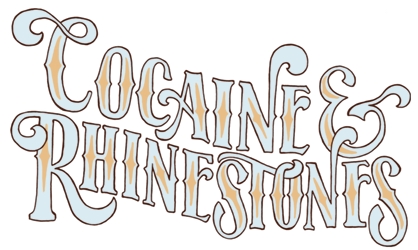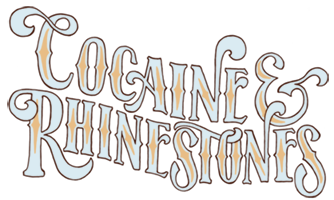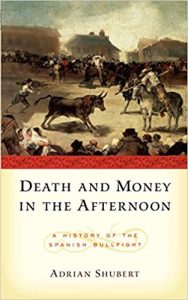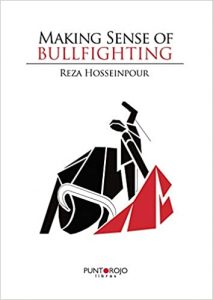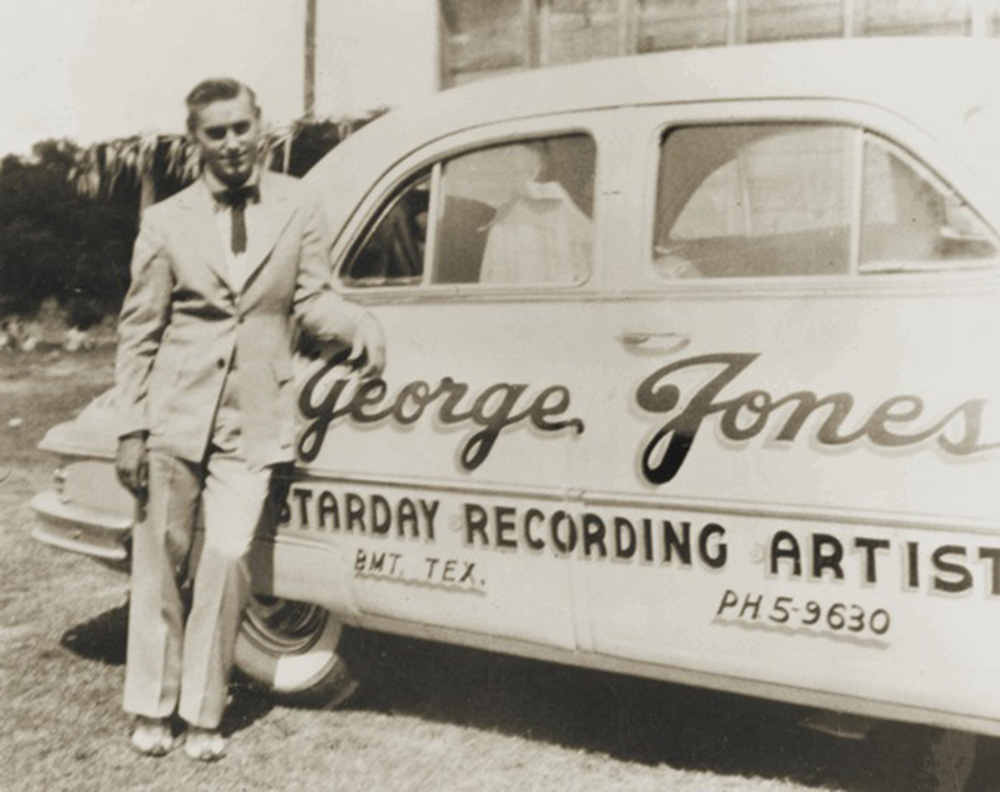
There are some personalities who would embrace being called The Greatest Country Singer Ever or, at least, settle into the role once it became clear the brand was eternal. George Jones did not have one of those personalities. The fame and fortune generated by his talent made him want to run away, so he spent decades running… toward something even worse than what he was trying to escape.
Was there ever a chance of this story playing out any differently? Probably not, no. But what in the hell even happened here? Our search for answers takes us back to Texas for one Singing Marine’s perspective on what it was like when lightning started flashing and thunder started clashing as he took the country music world by storm.
Contents (Click/Tap to Scroll)
- Primary Sources – books, documentaries, etc.
- Transcript of Episode – for the readers
- Liner Notes – list of featured music, online sources, further commentary
Primary Sources
In addition to The Main Library and the Season 2 Library, these books were used for this episode:
Transcript of Episode
As part of my agreement with Simon & Schuster to publish a book adaptation of Season 2, the transcripts that have been freely available for over a year will be temporarily removed from this website. Please consider ordering a copy of Cocaine & Rhinestones: A History of George Jones and Tammy Wynette through your favorite local bookstore or requesting that your local library order a copy you can check out.
Liner Notes
Excerpted Music
This episode featured excerpts from the following songs, in this order [with links to purchase or stream where available]:
- George Jones – “Wandering Soul” [Amazon / Apple Music]
- George Jones – “You Gotta Be My Baby” (original recording) [Amazon / Apple Music]
- George Jones – “You Gotta Be My Baby” (re-recording) [Amazon / Apple Music]
- Ray Price – “You Done Me Wrong” [Amazon / Apple Music]
- George Jones – “Life to Go” [Amazon / Apple Music]
- Stonewall Jackson – “Life to Go” [Amazon / Apple Music]
- George Jones – “Tall Tall Trees” [Amazon / Apple Music]
- Alan Jackson – “Tall Tall Trees” [Amazon / Apple Music]
- George Jones – “That’s the Way I Feel” [Amazon / Apple Music]
- Faron Young – “That’s the Way I Feel” [Amazon / Apple Music]
- Roger Miller – “I Ain’t Never” [Amazon / Apple Music]
- Jimmy C. Newman – “Cry Cry Darling” [Amazon / Apple Music]
- Chuck Guillory & His Rhythm Boys – “Gran Texas” [Amazon / Apple Music]
- George Jones – “Just One More” [Amazon / Apple Music]
- George Jones – “Don’t Stop the Music” [Amazon / Apple Music]
- George Jones – “Please Take the Devil Out of Me” [Amazon / Apple Music]
- George Jones – “Too Much Water” [Amazon / Apple Music]
Excerpted Video
These videos were excerpted in the episode. For any number of reasons, YouTube (or DailyMotion) may remove them in the future but here they are for now:
Commentary and Remaining Sources
It’ll be a miracle if I didn’t mispronounce some Spanish words or names in the intro. Obviously, the first thing I did once I knew I was gonna have to say a bunch of Spanish words was google “how to say Spanish words wrong” and then I just followed those instructions to make sure everyone got mad at me. Just kidding, I actually did try to find out the right way to say all of those things and I did do my best. As with the intro on the Kershaw Brothers episode in Season 1, listening to me say the occasional words incorrectly in English and other languages is just the price we’re all going to have to pay for this podcast to exist. I do try real hard to make it real good but it can’t ever be perfect and it’s never gonna be.
I did want to point out George Jones technically returned to Gold Star in Texas and recorded there again in the 1960s but it was to make a radio commercial for a Dodge dealership in Pasadena, not to cut a single or even album filler for cheaper than it would cost in Nashville.
Like I said in the episode, it’s nothing but a headache trying to figure out how “Life to Go” was really written. The closest thing to an official version is Jones and Stonewall Jackson were supposed to be on a package tour headlined by Ernest Tubb and one of the stops was at a prison. But where it breaks down is when you start looking into the dates of those tours in relation to the first recording of the song, plus which artists toured with Ernest Tubb and when. It is possible one of these guys was officially on a tour and the other one just came out to hang around on a few dates or something but it’s also possible they played a prison show after “Life to Go” was a hit for Stonewall and decided to switch the order of events because the song coming from a prisoner made for a better origin story.
As with the Spanish, if I got anything wrong about bullfighting it was absolutely not for lack of trying to learn the truth. I read several books on the topic and, as you could probably tell from the way I talk about it, that wasn’t exactly something I enjoyed doing. But, as you’ll see, bullfighting is a hugely important factor in not just this story but the entire culture around country music in the 20th century. One source I did not use on bullfighting was Ernest Hemingway because there are quite a few indicators out there that he’s actually not considered a great source on the topic. I’ve seen many references to him going back to Spain after The Sun Also Rises and being sort-of humored or patronized by bullfighters, not because of his knowledge but because the bullfighters knew Hemingway writing about them could only make them more famous and important to history. What sealed the deal for me was how Hemingway wrote about the different styles of the two matadors mentioned in this intro. Those matadors were filmed in the ring around the same period as Hemingway writing about them and his descriptions as to which matador was more showy and which more technical looked completely backwards to me.
One of my main sources on bullfighting was Adrian Shubert’s Death and Money in the Afternoon. As you’d guess from the title, it’s more to do with the history of bullfighting as an industry after the aristocracy let go of it and it immediately became commercialized.
Then there was Making Sense of Bullfighting by Reza Hosseinpour. This one is kind of like a scrapbook made by an aficionado, definitely biased in favor of bullfighting, even point-blank arguing the case to support bullfighting but it’s also probably the single best breakdown of the mechanics of the ritual. I do have to point out a few of the details as to which famous matadors should be credited with which innovations felt a little shaky to me. For example, he credits the matador Espartaco with disregarding the process of drawing a bull to the center of the ring where it would be less confident but Juan Belmonte was doing that decades before this matador was born.
All of my main sources on George Jones can be found on the Season 2 library page. I’ll repeat that for anyone interested in George Jones’ Starday years and/or the period in which he made the transition from recording in Texas to recording in Nashville, there’s no better source than the Bear Family box set Birth of a Legend: The Complete Starday and Mercury Recordings. It’s expensive but it’s amazing. That’s where I got the clip of Jones talking on the radio and there are a few other little things like that throughout the season I wouldn’t have known about if not for the George Jones box sets by Bear Family.
The first two biographies written on Jones were both published in 1984, about 30 years after the real beginning of the story and a full decade or so before the Internet would’ve made it way easier for those writers to spot errors and shaky sources in their books. So, basically, right in the sweet spot for someone like me to come along and tear these books to shreds, which I’m not going to do because both books are ultimately net-positive and it’s clear both writers did their best with what they had.
Ragged But Right by Dolly Carlisle is the more empathetic or compassionate of the two. Starting with the opening scene of the book, there are several stories that just flat-out didn’t happen the way they’re depicted and anyone who cares can track down video to see for themselves. But that’s not Dolly lying about what happened. It’s her writing about something she didn’t see, using the sometimes decades-old memories of other people as her source and, unfortunately, she didn’t seem to realize when she was being lied to because at least one of her sources (a guy named Gordon Baxter) was obviously a bullshit artist. However, one of the reasons that is so obvious is because of what this book does do really well, which is let most of the main sources speak for themselves by including paragraph-long quotes from George Jones, his family, friends, co-workers, etc.
Then there’s Life and Times of a Honky Tonk Legend by Bob Allen. One of the magazines this dude wrote for back in the day was Playboy and, having listened to several hours of his interview tapes, I can say he was particularly interested in the sensational or scandalous aspects of this story. Where this book seems to excel is in offering all kinds of hard data – dollar figures, dates, names of individual session musicians, etc. – but there are several instances of this type of information being incorrect, like things that definitely happened in a different year or the way he keeps calling the lead guitarist and background vocalist on the “White Lightning” and “Treasure of Love” session “Floyd Jenkins” instead of his real name, Floyd Robinson. Here, too, I doubt these mistakes were intentional but they do inform one’s faith in a source. Combined with the way this author takes certain liberties dramatizing Jones’ inner thoughts and kind of romanticizes his “bad boy” behavior, one does sometimes wonder how hard the guy may or may not have tried to confirm the most scandalous stories in this book.
I talked about a few interviews and articles in this episode, so I should say, a lot of times when you hear me refer to a newspaper or magazine, that’s something I found in the archives of the Country Music Hall of Fame and Museum. My assumption would be a lot of that stuff is not going to pop up in an Internet search. There are various newspaper and magazine archival services online but I have no idea what is and isn’t available from any given one of those. If someone out there hears something quoted from an article and they really want or need to know more, it’s sometimes possible to find vintage copies of magazines and newspapers for sale online. There were a few times I saw such articles referenced as sources in books or elsewhere and the only way I could track down the full article was by finding an old issue of a magazine and buying it.
Okay, that’s it. Come back for more George Jones in a couple weeks. It is all kinds of everything.
